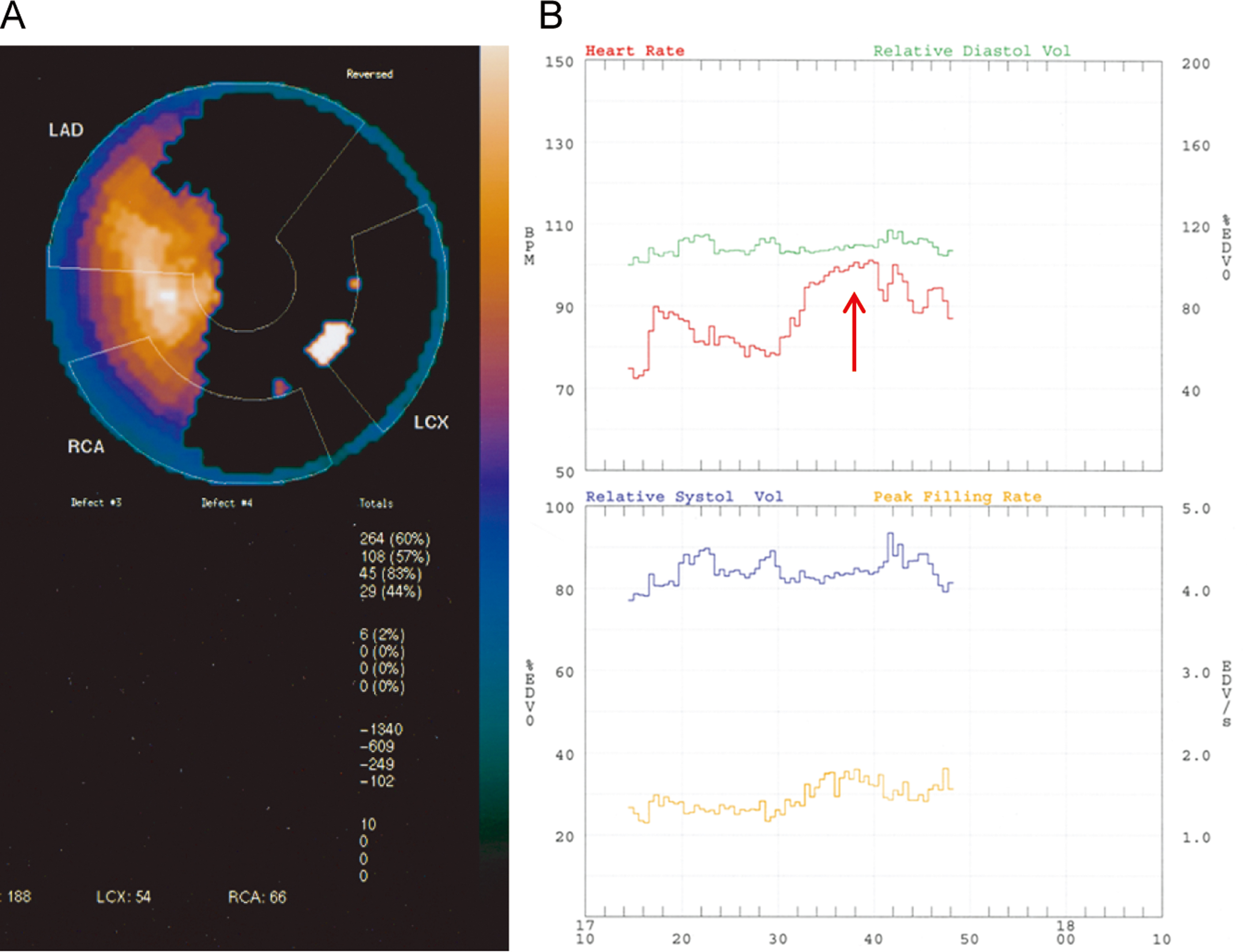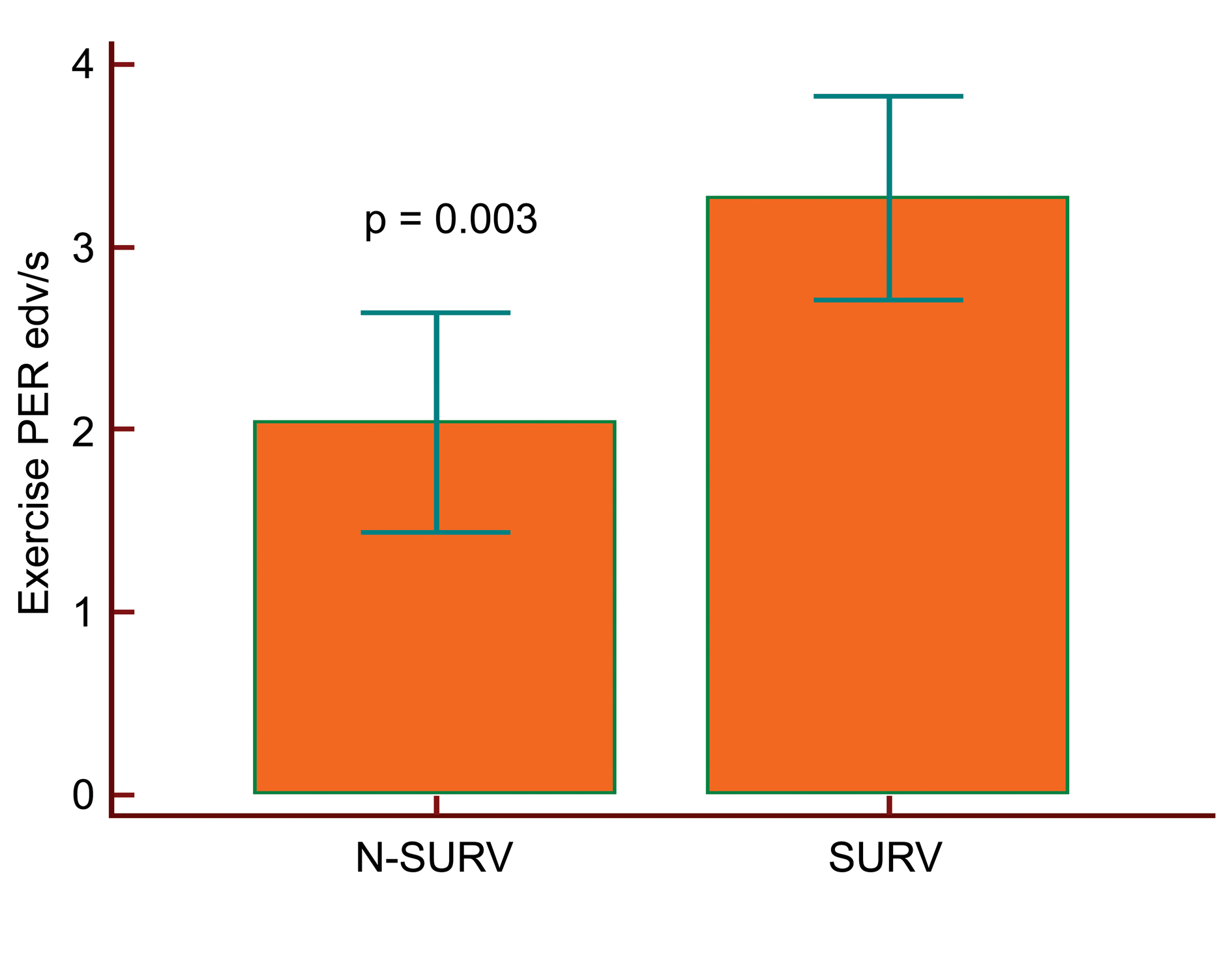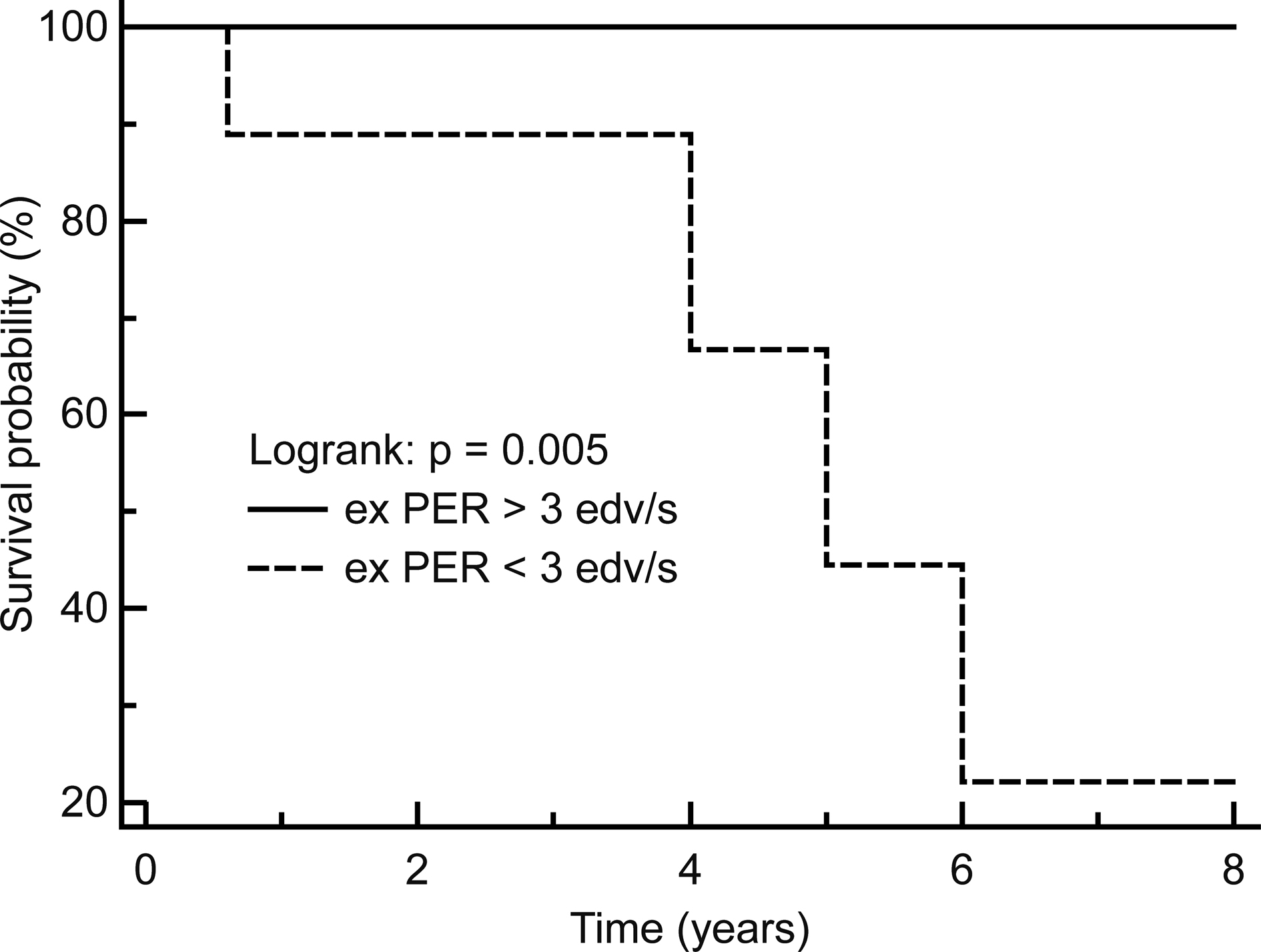
Figure 1. The radionuclide data of a 62-year-old man who had undergone LV aneurysmectomy and presented with occlusion of the anterior descending coronary artery, 90% stenosis of the circumflex and the right coronary artery free of obstructions. This patient manifested a 6-month mortality. A) Patient’s polar map from SPECT representing LV total pixels. The black spot represents the ADS size with an extent of 60% of the LV total pixels; the white spot represents reversibility with an extent of 2% of total ADS pixels. B) The panel shows, in this same subject, 26 min continuous ambulatory radionuclide monitoring recordings of heart rate, systolic and diastolic volumes and peak filling rate trends, at resting conditions and at peak exercise. At peak exercise (red arrow), the increment in heart rate was not associated with according changes in the systolic and diastolic volumes and peak filling rate. These data imply failure of the Frank-Starling mechanism and explain the mechanisms underlying failure of the contractile reserve and the patient’s outcome.

